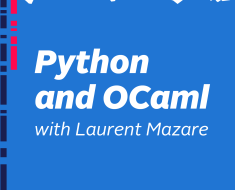
Background:
Patients with rare and complex diseases often experience delayed diagnoses and misdiagnoses because comprehensive knowledge about these diseases is limited to only a few medical experts. In this context, large language models (LLMs) have emerged as powerful knowledge aggregation tools with applications in clinical decision support and education domains.
Objective:
This study aims to explore the potential of 3 popular LLMs, namely Bard (Google LLC), ChatGPT-3.5 (OpenAI), and GPT-4 (OpenAI), in medical education to enhance the diagnosis of rare and complex diseases while investigating the impact of prompt engineering on their performance.
Methods:
We conducted experiments on publicly available complex and rare cases to achieve these objectives. We implemented various prompt strategies to evaluate the performance of these models using both open-ended and multiple-choice prompts. In addition, we used a majority voting strategy to leverage diverse reasoning paths within language models, aiming to enhance their reliability. Furthermore, we compared their performance with the performance of human respondents and MedAlpaca, a generative LLM specifically designed for medical tasks.
Results:
Notably, all LLMs outperformed the average human consensus and MedAlpaca, with a minimum margin of 5% and 13%, respectively, across all 30 cases from the diagnostic case challenge collection. On the frequently misdiagnosed cases category, Bard tied with MedAlpaca but surpassed the human average consensus by 14%, whereas GPT-4 and ChatGPT-3.5 outperformed MedAlpaca and the human respondents on the moderately often misdiagnosed cases category with minimum accuracy scores of 28% and 11%, respectively. The majority voting strategy, particularly with GPT-4, demonstrated the highest overall score across all cases from the diagnostic complex case collection, surpassing that of other LLMs. On the Medical Information Mart for Intensive Care-III data sets, Bard and GPT-4 achieved the highest diagnostic accuracy scores, with multiple-choice prompts scoring 93%, whereas ChatGPT-3.5 and MedAlpaca scored 73% and 47%, respectively. Furthermore, our results demonstrate that there is no one-size-fits-all prompting approach for improving the performance of LLMs and that a single strategy does not universally apply to all LLMs.
Conclusions:
Our findings shed light on the diagnostic capabilities of LLMs and the challenges associated with identifying an optimal prompting strategy that aligns with each language model’s characteristics and specific task requirements. The significance of prompt engineering is highlighted, providing valuable insights for researchers and practitioners who use these language models for medical training. Furthermore, this study represents a crucial step toward understanding how LLMs can enhance diagnostic reasoning in rare and complex medical cases, paving the way for developing effective educational tools and accurate diagnostic aids to improve patient care and outcomes.
Keywords:
AI assistance; Bard; ChatGPT 3.5; GPT-4; MedAlpaca; artificial intelligence; clinical decision support; complex diagnosis; complex diseases; consistency; language model; medical education; medical training; natural language processing; prediction model; prompt engineering; rare diseases; reliability.

![[2212.09437] Machine Learning Systems are Bloated and Vulnerable [2212.09437] Machine Learning Systems are Bloated and Vulnerable](https://aigumbo.com/wp-content/uploads/2023/12/arxiv-logo-fb-235x190.png)


